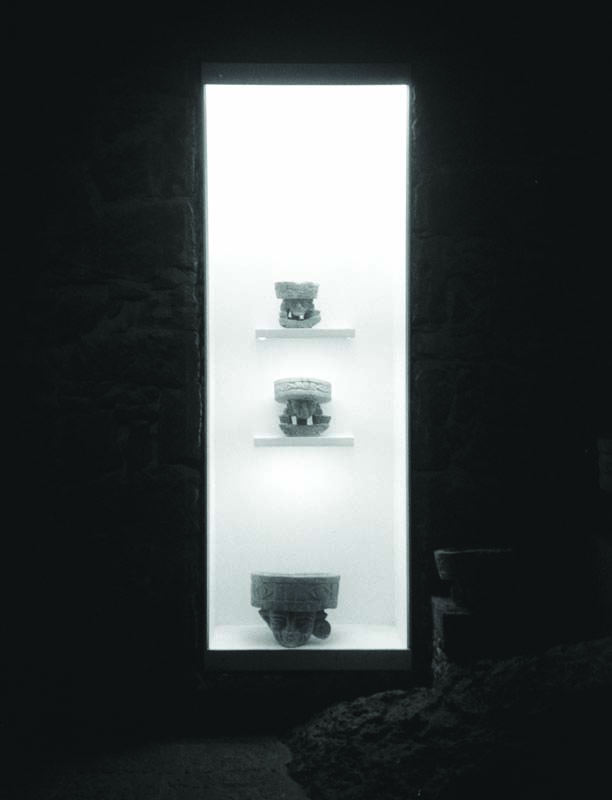Aphantasia and Architecture
As an architecture student with aphantasia, the way I experience my environment offers lessons on being present in the everyday.

I often wake up forgetting where I am. In the weeks of preparing this article, I’ve been surprised to find myself in airplanes, friend’s apartments, cabins on the beach, in taxis—each occurrence requiring a moment to recollect myself.
I’ve woken up.
What do I see?
What do I feel?
I am here.
The first of these questions is the most important. I cannot see images in my mind, nor can I imagine smells, tastes, or physical feelings, but sound and my inner voice remain clear in my head. I have aphantasia. The way I experience life and recall memories is different from others. It’s as if I’m walking through a dense fog—I can clearly see what is immediately around me, but as I take a step forward, I begin to lose what just passed.
Since I cannot fully remember the past or imagine the future, the present is the most important moment to me. This also changes how the built environment affects me: I cannot dwell in memories of places I admire, and spectacles do not remain in my mind. Where I am now is what I know, and because of this, my everyday surroundings are incredibly important. Where do I spend most of my time? What objects, places, or people fill the average hours of my life? After travelling, I know that I loved the incredible places I’ve been in, but once I leave, they almost instantly fade away from me, and all I am left with is my normal life.
As a result, I am very specific with what I choose to have close by. Design affects everyone’s life, but oftentimes, we pay the most attention to objects or places deemed to be “special.” Why must that distinction be made? If something will be a part of someone’s life, shouldn’t it be carefully designed for them, regardless of what it is?
I’ve been drawn to design and architecture because it helps frame my world. It not only gives me something to stimulate my vision and actions, but also provides an opportunity to settle myself. Architecture can be understood as the bounding of boundless space, and, for me, creates a place of safety in which I can understand my world. The most compelling spaces are those which allow me to let my guard down and be fully aware of what is happening in my life at this very moment. In those spaces, there is a level of safety required to help me slow down and observe, without additional pressures that make me feel rushed. Such sense-engaging spaces are the most successful ones at bringing me down to the now. With aphantasia, I greatly value sight, but it is important to couple it with other senses—immersive experiences that include touch, smell, taste, and temperature strengthen my awareness of the present.
There are times when I’ve experienced complete immersion in my environment. While it may seem like I am “zoned out” at those moments, I am actually incredibly tuned in to both myself and my place in the world. The back-and-forth of acknowledging self and opening up to my surroundings has become an important rhythm of daily life: if there is too much of one, I can start to feel disassociated and out of place. It’s difficult to pinpoint what allows either situation to happen, but being aware of both states is part of the process. Encouraging slowness in my life, while seemingly simple, has been effective, yet uncomfortable. A paced rhythm ties my day together, otherwise, moments can become disjointed and difficult to remember. Memories become much stronger when they are connected by high and low points of stimulation.
Similarly, the composition of visuals and experiences becomes quite important to the way I absorb my environment. Disparate elements are far less moving than the amalgamation that surrounds me. This works at a variety of scales: whether I am considering a city block while walking to work, or the room at home where I am writing this text. What is the general atmosphere I’m in? What objects, people, and environments fill my field of vision? What is the arrangement of my life? Focusing on composition is akin to treating everything as a series of still lifes, where intentional beauty not only makes me pay attention to the present, but helps me to appreciate it more.
While aphantasia creates a different experience of life, these thoughts are applicable to everyone. Our eyes are trained to fill in blanks and make assumptions. My experience emphasizes the value of truly seeing and being aware of your surroundings. Of remaining attentive and slowing down to notice the composition of your daily life: what do you have control over, and what guides you? Design surrounds us and is inescapable, yet we often focus on very specific works which “deserve” attention. We sometimes diminish the power of everyday life: yet this is the condition which has the most potent influence on our being.
Christian Maidankine is a Master’s candidate in the Department of Architectural Science at Toronto Metropolitan University.
